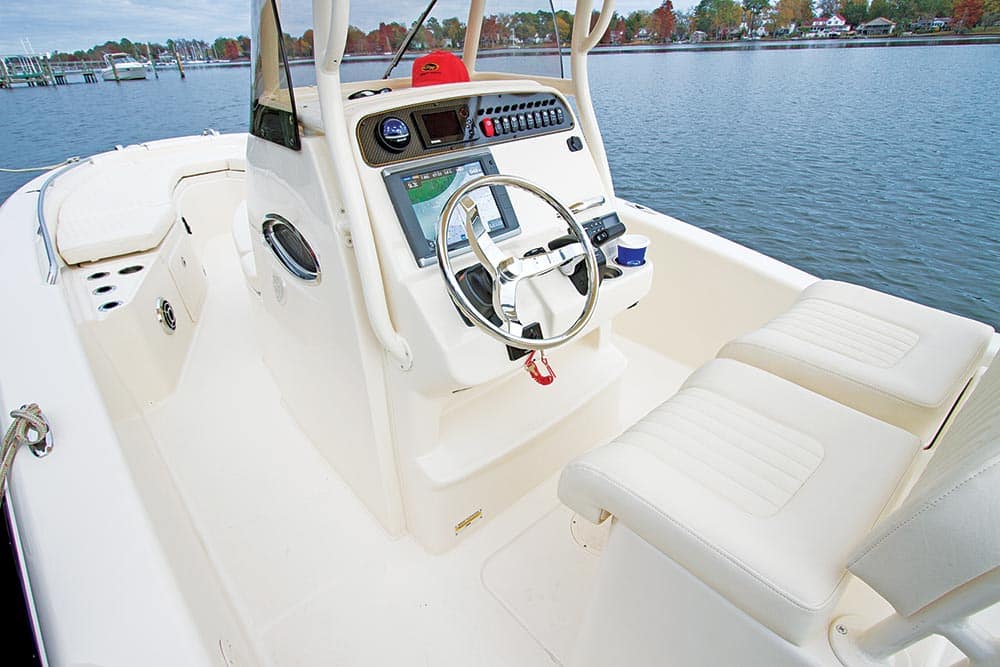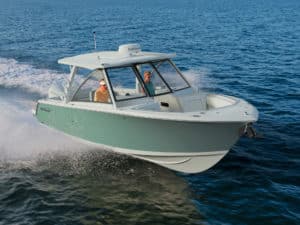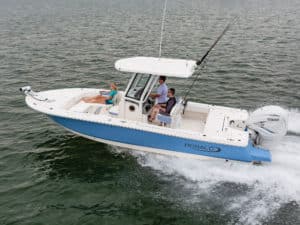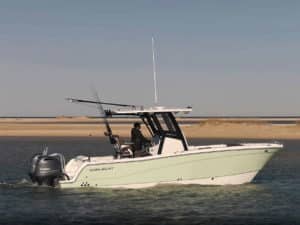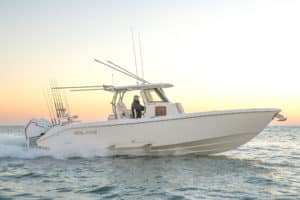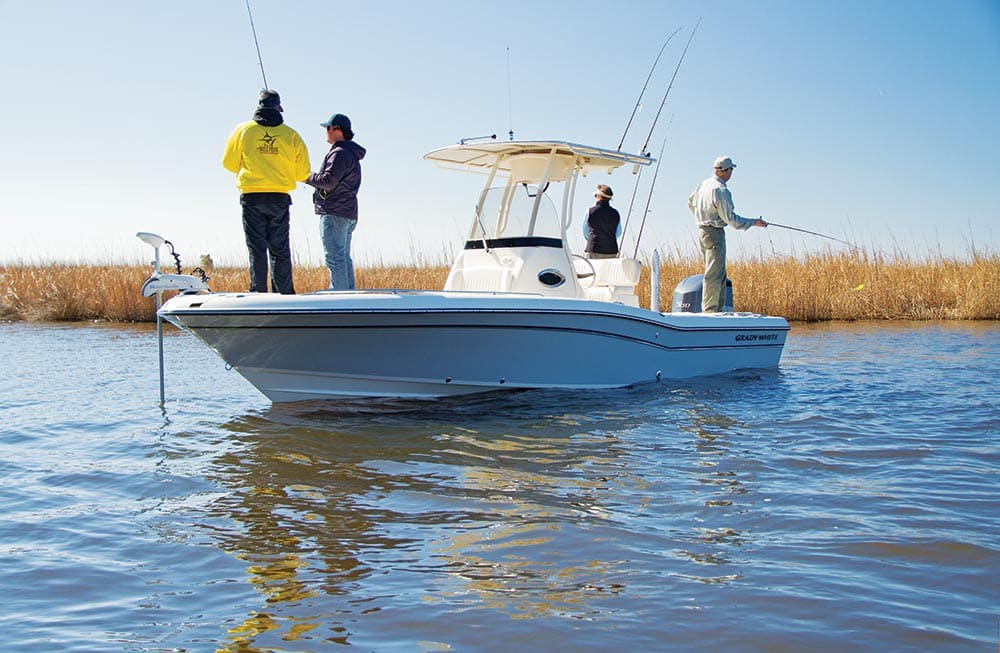
Grady-White 251 Coastal Explorer
I love all kinds of fishing, but whenever asked if I have a preference for offshore or inshore angling … well, I lean a little inshore. That’s what I do in my own backyard. But that doesn’t mean I won’t run miles to fish offshore bait pods for tarpon in summer, and it doesn’t mean I fish only calm little creeks and backwaters. The waves at my local beaches and sounds wear whitecaps when the winds blow.
So maybe I’m a ‘tweener. Grady-White made its new 251 Coastal Explorer for ‘tweeners — those conflicted by inshore and offshore choices, as well as those who might blend fishing with a hefty helping of family fun. The 251 itself displays a split personality — floating in as little as 14 inches of water yet offering higher freeboard, a prouder bow and more-comfortable seating than most bay boats. In fact, Grady says this is not a bay boat; it belongs in its own new category.
CAROLINA ADVENTURE
To give the Coastal Explorer a proper fish trial, SF editor-in-chief Doug Olander and I joined Grady’s Joey Weller and local captain Richard Andrews **in March on the **Pamlico River just above its namesake sound near the North Carolina coast. Before we left the dock, we removed and stowed the fore and aft cushions that transform the casting decks into plush sun platforms with folding backrests.
Andrews had planned to make a run downriver, stopping at pilings and outfalls, before venturing into the sound. The brisk March morning brought fog to the river, so the initial 20-minute run seemed eerie, and the wind chill forced us to pack on the clothing.
Weller throttled back near a set of pilings off Durham Creek. Andrews handed out light spinning rods spooled with 10-pound braid and baited with Z-Man soft plastics and light jigheads.
Andrews deployed the Motorguide trolling motor, using a prototype mount Grady created for the 251. Because the boat features a standard, bow boarding ladder for easy egress at sandbars and beaches, the trolling motor bolts to a swiveling downrigger base attached to a quick-release bracket on the gunwale, aft of the ladder. Both ladder and motor retain full range of motion.
HYBRID FRENZY
We prospected for striped bass around the pilings with little luck before pulling stakes and running farther downriver to the freshwater outfall from a phosphate plant. Weller motored in carefully, then Andrews lowered the Motorguide. The turbid river water cleared, and we could see the sand bottom not much more than a foot below.
Amazingly, our boatload of people, fuel, batteries and tackle remained buoyed, never touching bottom.
Three of us stood on the broad bow casting deck and tossed out baits to the roiling waters. To accommodate both fishermen and families, Grady used an optional, removable table as an insert to bridge the gap between the port and starboard 74-quart insulated fish boxes (with overboard drains). Remove the table and place it into a mount in the sole to picnic with friends.
The hybrid striper bite turned on like a faucet. We jockeyed around to land fish, take photos and keep casting. The 251 gave us plenty of room to move. Six vertical rod holders placed in the forward-seating bulkheads — ahead of the console — let us walk fore and aft quickly.
With four people in constant motion, I never felt the boat sway or dip; it provided a very solid platform that kept my focus firmly on the fishing moment.
WELL APPOINTED
After boating enough legal hybrids for dinner, we ran to the opposite side of the river and into a marsh creek. Three of us spread around the boat, and I tried fishing from the aft casting deck as we searched for red drum.
Grady very thoughtfully arranged the deck hardware throughout the 251 to eliminate snag points while adding style: covering screw heads and hinges with polished plates. The effect is one of a clean, flush look.
Although we fished with -artificial baits, this 251 came equipped with an optional aft lighted livewell (12¾ gallons) and the optional deluxe leaning post with a 25-gallon livewell. To keep deck space open, Grady built the tall, cylindrical well — with full column distribution inlet — beneath the passenger side of the padded leaning post.
Standard helm seating includes a leaning post with removable backrest and space for a cooler beneath. Grady offers a 51-quart insulated fish box standard in place of the optional aft livewell.
SPEED AND HANDLING
The 251 is rated for a maximum of 300 horsepower; this test boat came with a Yamaha F300 and standard Command Link Plus gauge. The 300 gives this Grady an excellent hole shot and spunky midrange acceleration.
Once we returned to the main river, Weller and I explored the 251’s performance. Yamaha had already run a test with this package, but since we were loaded for bear, I wanted to see how the boat ran and handled.
On this practically windless morning, the 251 planed in about 4 seconds — the time between throttling down and the moment the bow tips — without deploying the optional trim tabs. Granted, this is always a subjective number, but 4 seconds is momentary.
Throttling up to 30 mph took just 8.7 seconds. Yamaha’s tests showed 7.28 seconds. Trimmed up at 5,900 rpm, we reached 45.8 mph, though the earlier factory run showed a lighter load allows speeds to almost 50. At a speed of 22 mph (3,300 rpm), we found the best fuel -efficiency: 3 mpg.
In its handling, the 251 clearly shines. In hard turns left and right, the vessel banks into supertight arcs with no slipping. And while we had no chop to speak of, tight doughnuts with the boat created 2-foot peaks that I blasted back through with very little ruckus.
The slightly higher bow gives a little more weight to that end of the hull as well, creating a very balanced ride and sharper entry.
DESIGN AMENITIES
Grady’s SeaV2 hulls have grown from a heritage of seakeeping unique to North Carolina’s often-rowdy inlets. The naval architectural firm C. Raymond Hunt Associates has designed Grady’s running surfaces since 1989. SeaV2 construction employs a variable-V deadrise — no two places on the keel carry the same angle.
Company craftsmen, many who have worked for Grady for decades, hand‑lay the fiberglass for uniform thickness. They also spray in foam between the rigid stringers to add even greater strength, and bolster the transoms with an angled aluminum brace.
While our purpose was to fish this Coastal Explorer, the boat’s softer side certainly deserves attention. The lockable console features room to stand, a portable head, access to electronics and room for storage. Fore and aft padded seating areas offer folding backrests and ample cup holders within easy reach.
The standard aft boarding ladder can be deployed from the water, and an optional cockpit freshwater shower provides swimmers with a quick rinse. At the helm, a footrest molded into the console offers a bracing point, and accommodates even small passengers.
The test boat also came with a T-top that sported four rod holders and an electronics box. The leaning post offered four more holders and a hatch with tackle drawers. Two cubbies in the bow hold more tackle drawers and boxes.
With the new 251 CE, anglers find plenty of quality, bigger-boat features. Add in the sports-car handling and pleasurable fishing platform, and this vessel just might be one of a kind.
** PERFORMANCE **
LOAD: Four adults, 78 gallons of fuel,
fishing tackle, safety gear, T-top
TOP SPEED: 45.8 mph* @ 5,900 rpm
TIME TO PLANE: 4.1 sec.
TIME TO 30 MPH: 8.7 sec.*
BEST MPG: 3 @ 22 mph (3,300 rpm)
* On Yamaha performance tests and with a lighter load, the 251 topped out at 49.6 mph and reached 30 mph in 7.28 sec.
HULL
LOA: 24 ft. 7 in.
BEAM: 8 ft. 6 in.
DEADRISE: 16 deg.
DRAFT: 14 in.
WEIGHT: 3,550 lb. (dry)
FUEL: 78 gal.
MAX POWER: 300 hp
MSRP AS TESTED: $121,816* *(w/ Yamaha F300 and all options except trolling motor)
Grady-White Boats
Greenville, North Carolina
252-752-2111
gradywhite.com

Grady-White 251 Coastal Explorer
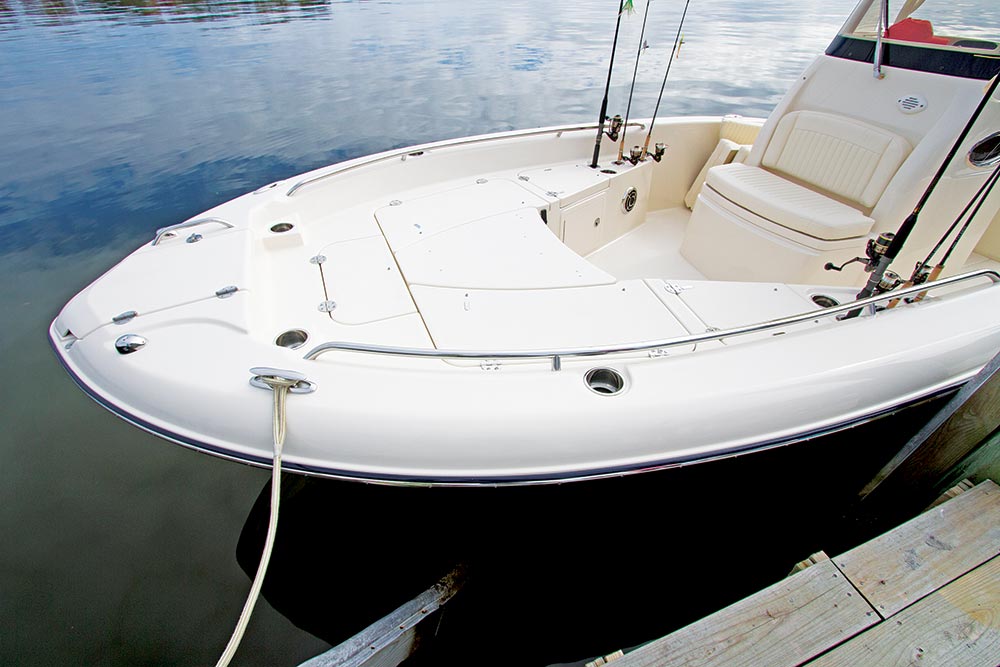
Grady-White 251 Coastal Explorer
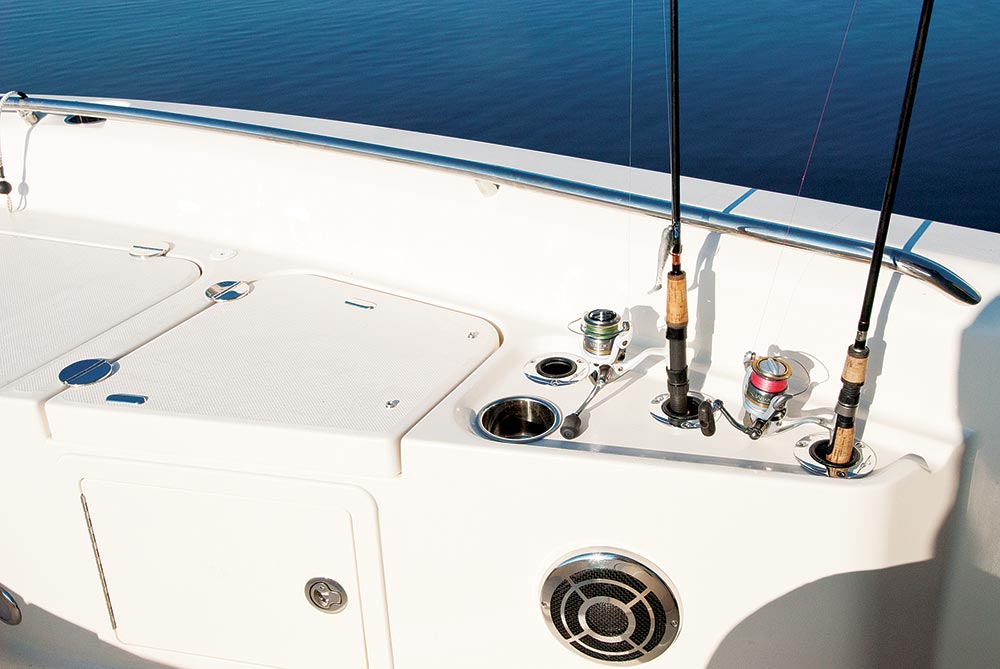
Grady-White 251 Coastal Explorer
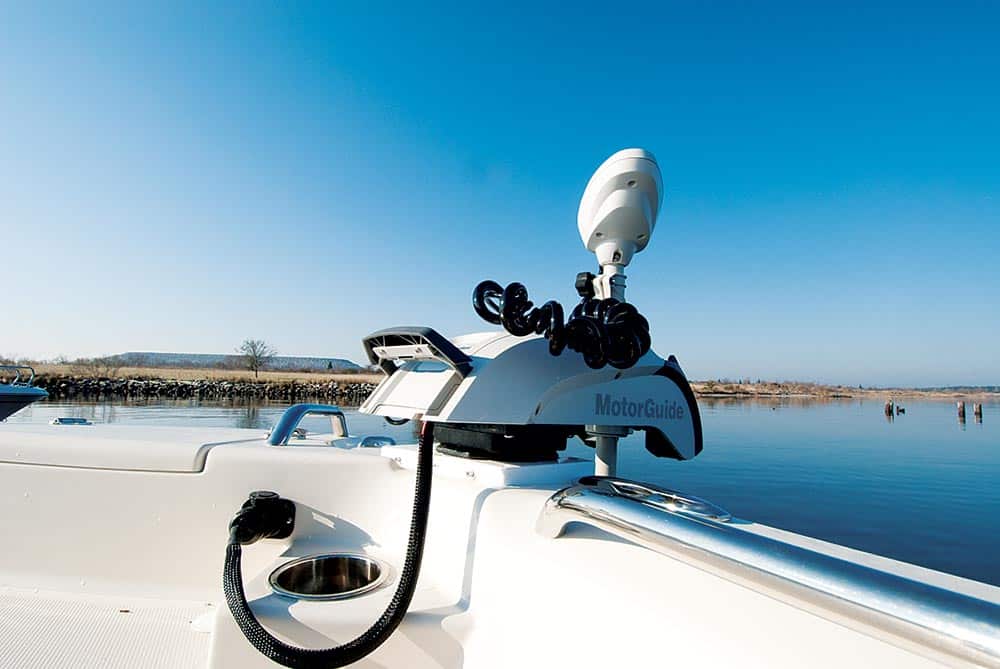
Grady-White 251 Coastal Explorer
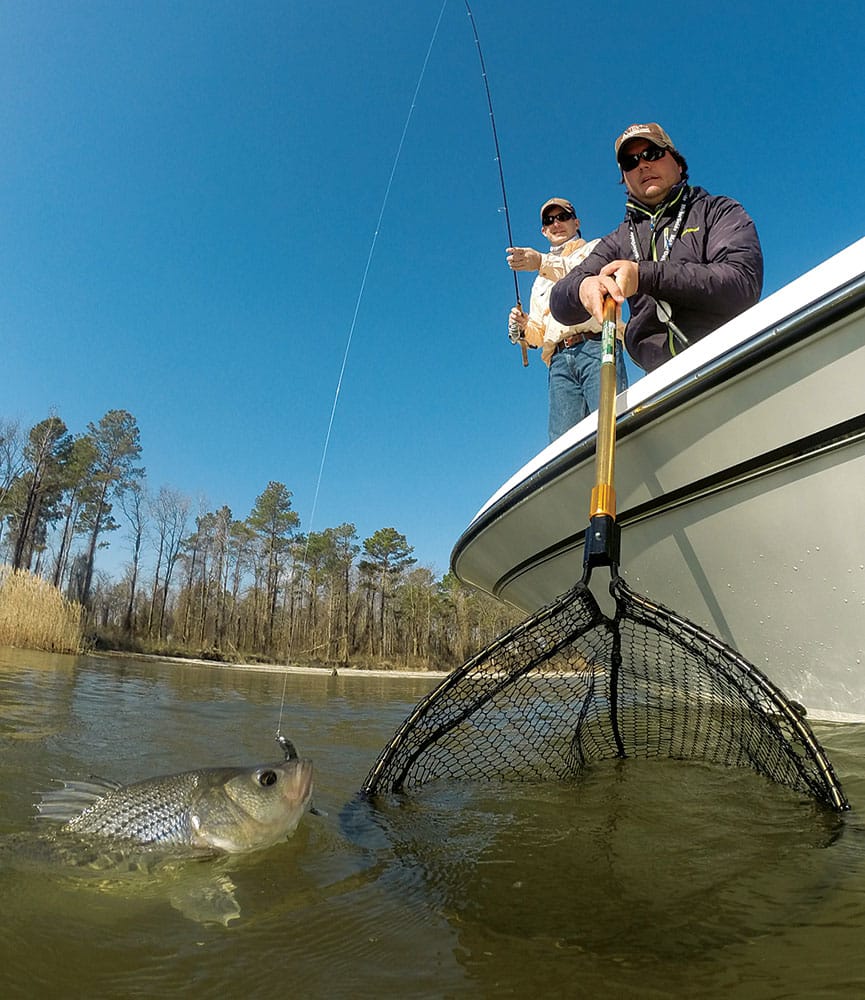
Grady-White 251 Coastal Explorer
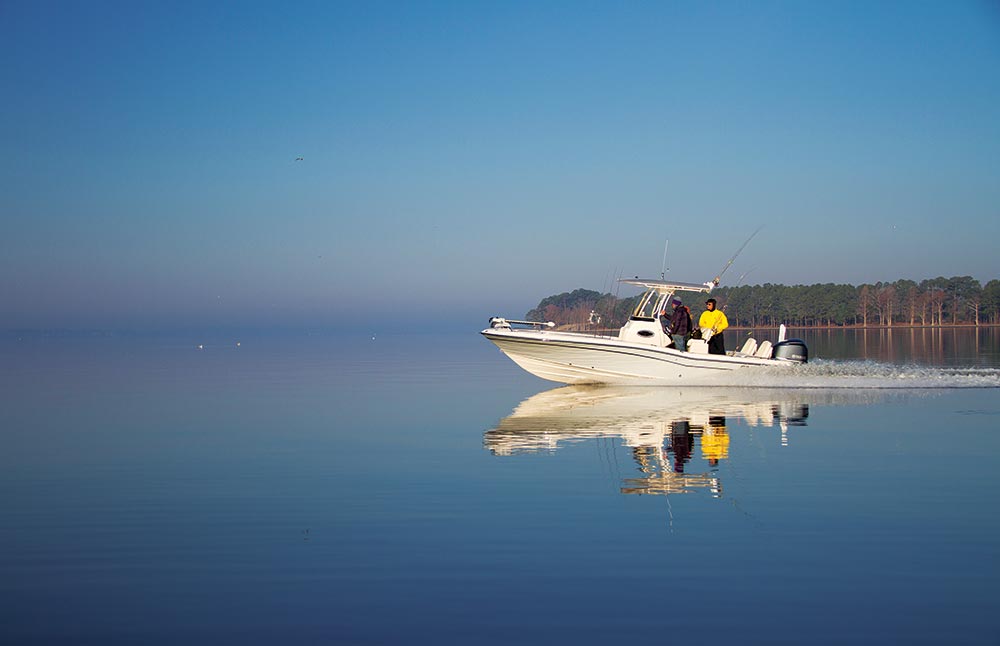
Grady-White 251 Coastal Explorer
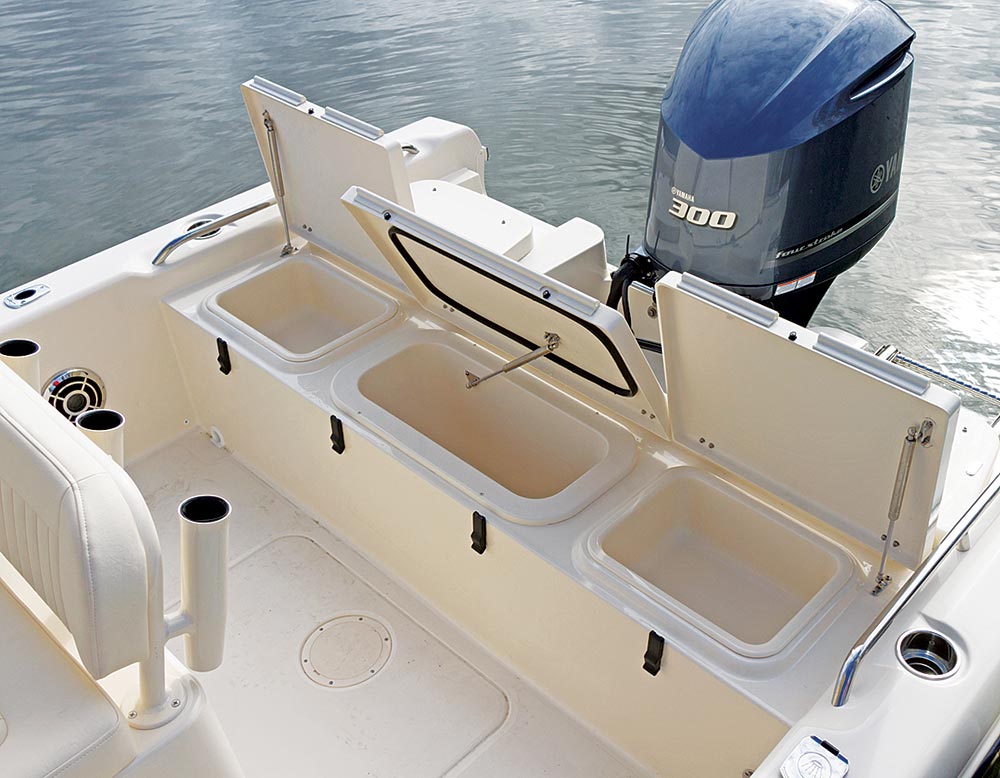
Grady-White 251 Coastal Explorer
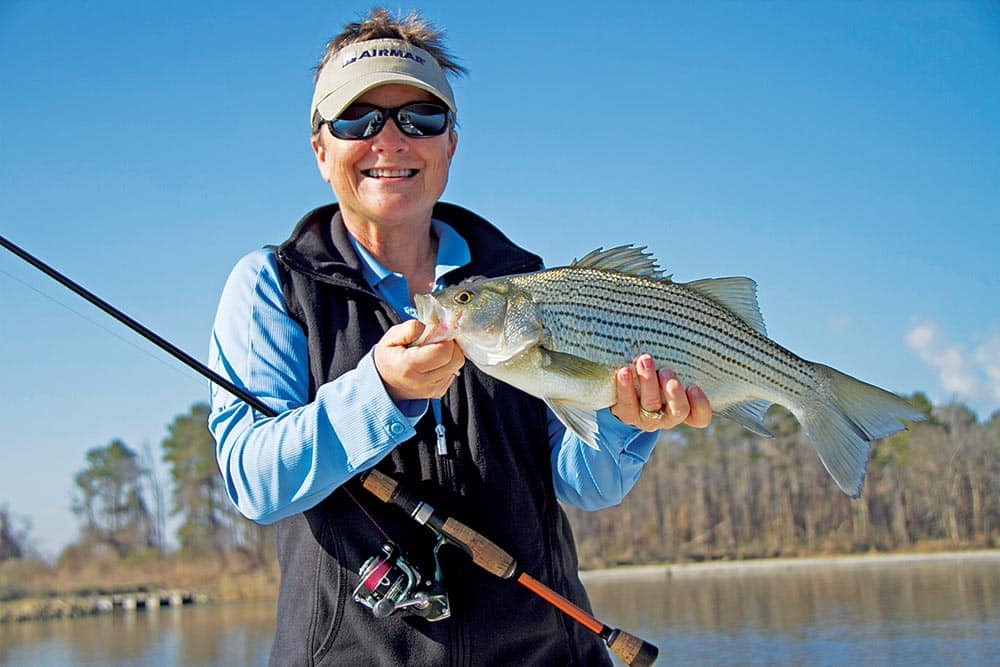
Grady-White 251 Coastal Explorer
